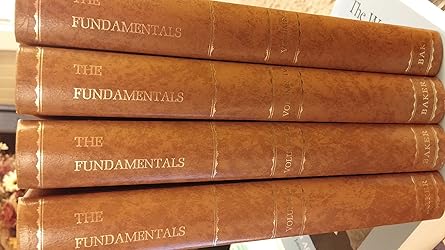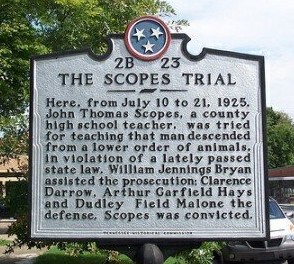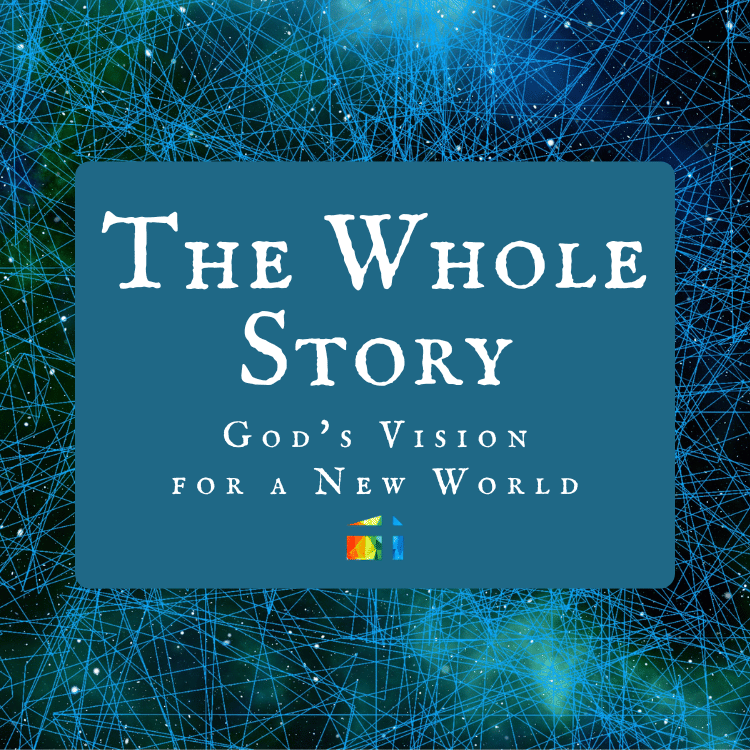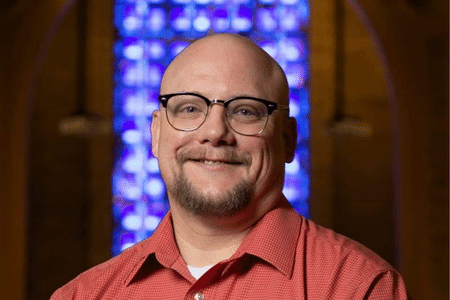
April 30, 2025
A Note from Pastor Jon
Dear Friends,
When the Letter Becomes Stone:
A Reflection on the Rise of Theological Fundamentalism
Before I ever studied hermeneutics or learned to pronounce it, I had already been shaped by a singular lens of interpretation — one that read the Bible as both map and rulebook, absolute and unchanging.

I grew up in Hopewell, Virginia, just down the road from prominent faith leaders and communities deeply connected to the rise of fundamentalist Christianity. Jerry Falwell was 45 minutes west, and Pat Robertson was about an hour to the south (pictured).
Some of the first preachers I ever heard were in churches influenced by leaders like Jack Hyles, known for his strict, separatist Independent Baptist teachings. I also spent time in the Presbyterian Church in America and Southern Baptist Convention, and I received an undergraduate degree with a minor in religion from a Southern Baptist Convention affiliated college, all of which carry strands of the broader fundamentalist legacy.
This was the foundation of my early faith, up until I was about twenty years old. I learned to take Scripture seriously. I learned to believe that what we say about God matters. I learned to read the Bible daily and to live it out boldly.
For all its rigidity, there was also beauty in that early experience — sincerity, reverence, and deep passion.

While all of that sounds really grand, over time I began to notice the sharp edges. I met people whose lives didn’t fit the boundaries the church had drawn. Many were pushed out or never welcomed inside. I had questions that couldn’t be answered with a single proof text.
The interpretive lens
I realized that the same interpretive lens that gave me clarity could also create walls between people — and sometimes between people and God.
That re-examining, reframing, and even healing has taken me on a journey now of more than thirty years. For me this is not about throwing away the past. It’s about learning to see it as one part of a much larger story.
In this Easter season we are exploring some of the lenses through which we interpret scripture. This week it’s all about the lens of theological fundamentalism. My goal in this letter and in my sermon this coming Sunday is not to be about bashing fundamentalism. Rather, I want to honor my own past, what fundamentalism sought to protect, but at the same time to acknowledge where it has harmed, and name how it might be transformed by the Spirit.
The Origins: Fear and Faithfulness
Fundamentalism didn’t emerge in a vacuum. In the late 19th and early 20th centuries, major shifts were shaking the theological landscape. Charles Darwin’s theory of evolution (1859) was challenging literal interpretations of Genesis. German scholars were publishing higher biblical criticism, which examined the Bible’s historical development. Modernist theology suggested that doctrine needed to evolve with society.
For many Christians, this was frightening. They worried that the faith would lose its footing if its core doctrines were questioned.
In response, a group of scholars and pastors began articulating what they called the “fundamentals” of the faith — doctrines they believed were essential to true Christianity.

Between 1910 and 1915, a series of pamphlets titled The Fundamentals: A Testimony to the Truth was published and distributed to churches across the U.S. These essays defended beliefs such as the inerrancy of Scripture, the virgin birth, substitutionary atonement, the bodily resurrection, and Christ’s literal return.
There was a genuine desire to preserve the heart of the gospel. That’s important to recognize. Many of us wouldn’t be where we are today in faith if someone hadn’t cared deeply about these convictions.
The Shift: From Preservation to Purity
But as time went on, the movement became increasingly rigid. It responded not only to theological liberalism but also to social and scientific change with a defensive posture. It began to draw lines in the sand: you were either in or out. You either agreed, or you were suspect. Churches that once welcomed questions began to fear them.

By the 1920s, the divide between fundamentalists and modernists was tearing through major denominations. The Scopes Trial of 1925 — where a teacher from Dayton, Tennessee, was tried for teaching evolution — brought the clash into the national spotlight. Though the fundamentalists technically “won” the trial, they lost the broader cultural moment, as the press portrayed them as anti-intellectual and backwards.
In response, many fundamentalists withdrew. They created their own Bible colleges, independent churches, and mission agencies. Some leaders, like Jack Hyles, helped shape an entire network of Independent Fundamental Baptist churches, where doctrinal purity and moral control were paramount, and the King James Bible was the only accepted text.
By the 1970s and 1980s, figures like Jerry Falwell and Pat Robertson helped give fundamentalism a political dimension. The rise of the Moral Majority and later the Religious Right blended theological certainty with conservative social agendas. The pulpit became increasingly political. Lines were drawn not just around doctrine, but around party platforms and patriotism, leading to today’s movements of Christian Nationalism.
The Cost: Walls Where There Should Be Tables
As someone who grew up inside these movements, I can say this with both love and lament: when the focus becomes preserving the letter, we can lose the Spirit.
The same zeal that once led people to study Scripture fervently also led some to weaponize it. I’ve seen how fundamentalist approaches to Scripture have:
- Excluded women from preaching or leadership.
- Shamed LGBTQ+ people into silence or exile.
- Denied science, mental health support, or new insights from scholarship.
- Equated nationalism with faithfulness.
Fundamentalism often operates on a fear of compromise. But the gospel isn’t fragile. Truth doesn’t need to be protected by rigidity — it needs to be lived with love.
The Shift Toward Life
In 2 Corinthians 3, Paul writes: “The letter kills, but the Spirit gives life.” He’s talking about a new way of understanding God’s covenant — not written on tablets of stone, but on human hearts. And in Matthew 23, Jesus calls out religious leaders who are so obsessed with precision that they’ve lost compassion. They’ve tithed their herbs but ignored justice.
Jesus doesn’t throw away the law. He reframes it. He shows us how to fulfill it in love.
That’s the work of hermeneutics — learning to read Scripture in a way that brings life, not fear. Not as a weapon, but as a witness. Not as a closed system of answers, but an open invitation to love.
Where We’re Going
As we journey through this series on interpretive lenses, we honor the gifts of the traditions that shaped us. But we also examine them with courage.
The lens of fundamentalism taught me and so many others to revere Scripture. That’s no small thing. But it also taught us to fear differences and to draw boundaries where Jesus was building bridges.
My hope is that we can read Scripture with both conviction and compassion — holding tightly to what is life-giving and letting go of what shuts others out.
Faith doesn’t have to be a stone tablet. It can be a living letter, written on hearts, shared in community, shaped by grace.
See you Sunday,
Pastor Jon
The Rev. Jon Osmundson
Associate Pastor



